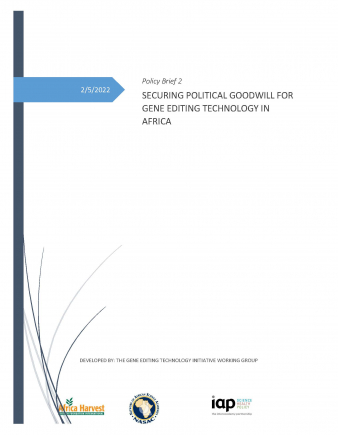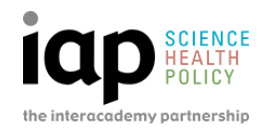The advent of genome editing has evoked both enthusiasm and controversy, creating regulatory and governance challenges worldwide. Special attention must be given to policies and governance, as well as contributions addressing regulatory aspects of gene editing for plants. The success of gene editing techniques cannot be guaranteed by science alone. Political influence and social acceptance significantly contribute to market performance of crops. The acceptance and application of gene editing technology requires a framework that is approved by legislation and policy of national government. The role of policy in decision-making is crucial. It is very important that policy dialogue is encouraged between policymakers and different actors to guide decision-making on gene editing technology, especially at national levels.
SCIENCE-POLICY INTERPHASE Engaging policymakers illuminates the policy landscape and plays vital role in supporting the application of gene editing technology. A number of frameworks can be used by policymakers to engage the public and secure their support for gene editing technology. Since the advent of recombinant DNA technology in 1973, novel tools for breeding by genetic engineering have received significant focus resulting in accelerated development of genetic engineering technology. The applications of these technologies are diversely used in medicine, pharmaceutical industries, agronomy, and food production. In-spite of the remarkable success of the gene editing technology, the production of genetically modified organisms (GMOs), raised several concerns, which limited the acceptance of GMOs by policymakers. Genome editing involves making slight changes to the existing genes in a plant or animal. Unlike genetic-engineering techniques, gene editing does not involve the insertion of foreign genetic material from other species. Genome editing technology utilizes deliberate genetic modifications like plant breeding techniques of hybridization and mutations. However, genome editing is cheaper, faster and more predictable than previous methods. These features resulted in lauding 2015 CRISPR Cas as the ‘breakthrough of the year’ by the journal Science. The Nobel prize winners in 2020 Emmanuelle Charpentier and Jennifer Doudna were notably two gene editing pioneers in Europe for their work on the development of Crispr-Cas9, a method for genome editing which provides the ability to search and edit specific genes with lower risk and unintended consequences to other parts of the genome. With this factual information, gene editing technology is a surefire for combating hunger by increasing crop production in Africa.
GENE EDITING TECHNOLOGY AS NATIONAL, REGIONAL AND GLOBAL PRIORITY In the African Union (AU)-Agenda 2063, the fifth goal on “Modern Agriculture for increased productivity and production”, gene editing technology has a big role to play in achieving this goal. African countries have a good opportunity to take a part in the new challenge of worldwide efforts to adapt gene editing as legal, certified, and safe approach for food production. Several countries in the world, such as Argentina, Australia, Brazil, Canada, Chile, Japan, and the USA do not regulate gene editing varieties that have no foreign gene integration. Other countries like India, Kenya, and Nigeria are in the process of developing regulatory guidelines for the application of genome editing technology. Science-based regulatory guidelines will enhance the adoption of disease-resistant gene edited crop varieties, and therefore contribute to food security. It is important that policymakers in Africa dialogue with scientists to pursue internationally recognized framework for facilitating gene editing technology for purposes of food security.


